Azil Dumovec: Where Zagreb Bus Drivers Take Their Injured Owls
December 8, 2021 – When there's an animal emergency in Zagreb, Azil Dumovec are the first to respond. TCN visits the city animal shelter to find out what they do.
Zagreb bus driver Dario Buzjak was making his final run from Velika Gorica back to the city terminal when he noticed something unusual lying in the road. Saturday night had already turned to Sunday morning on this late November evening. Yet, despite the lateness of the hour, the cold and bad weather, Dario postponed clocking off to stop and take a closer look.
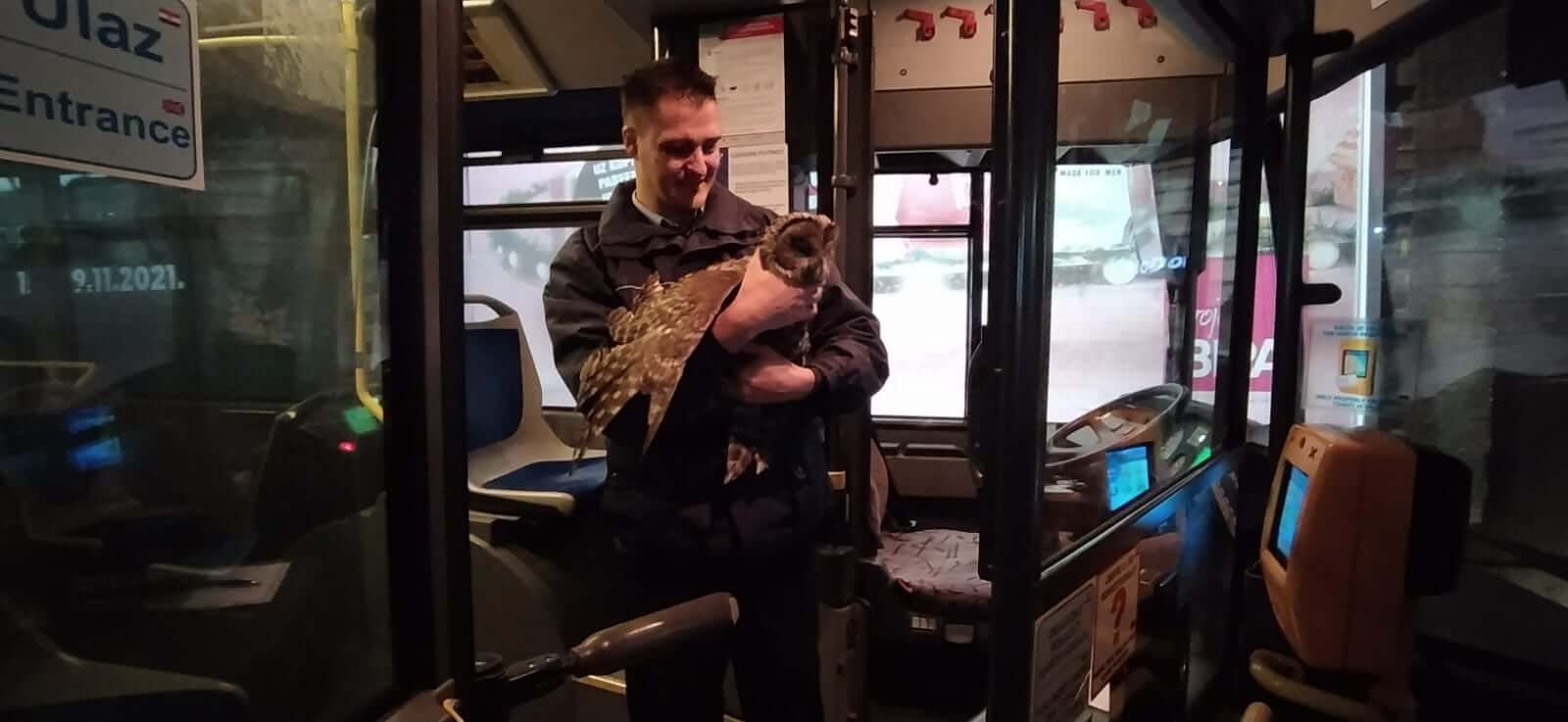
As he got nearer, Dario could tell the owl was injured. So, to make sure she wouldn't be run over by another driver, he carefully picked her up. After placing her in the footwell of his bus, he started back on his journey to the station.

But, what to do next? Just who does a Zagreb bus driver contact when he finds an injured owl in the road?
Luckily, Dario Buzjak knew exactly what to do. He called Azil Dumovec.
“Dario knew about us because he adopted one of our dogs a few years ago,” says Tatjana Zajec, manager of Azil Dumovec. Based on the eastern outskirts of Zagreb, it is Croatia's first and largest municipality-owned animal shelter. “After he made sure it was safe inside the bus, he called us immediately. We took the call here and sent out one of our animal welfare responders.”
If there's an emergency involving an animal in Zagreb, Azil Dumovec is the first point of call. In fact, if someone phones 112 (the general emergency line) about an animal, the operator will make an assessment and, if warranted, transfer the caller to Azil Dumovec.
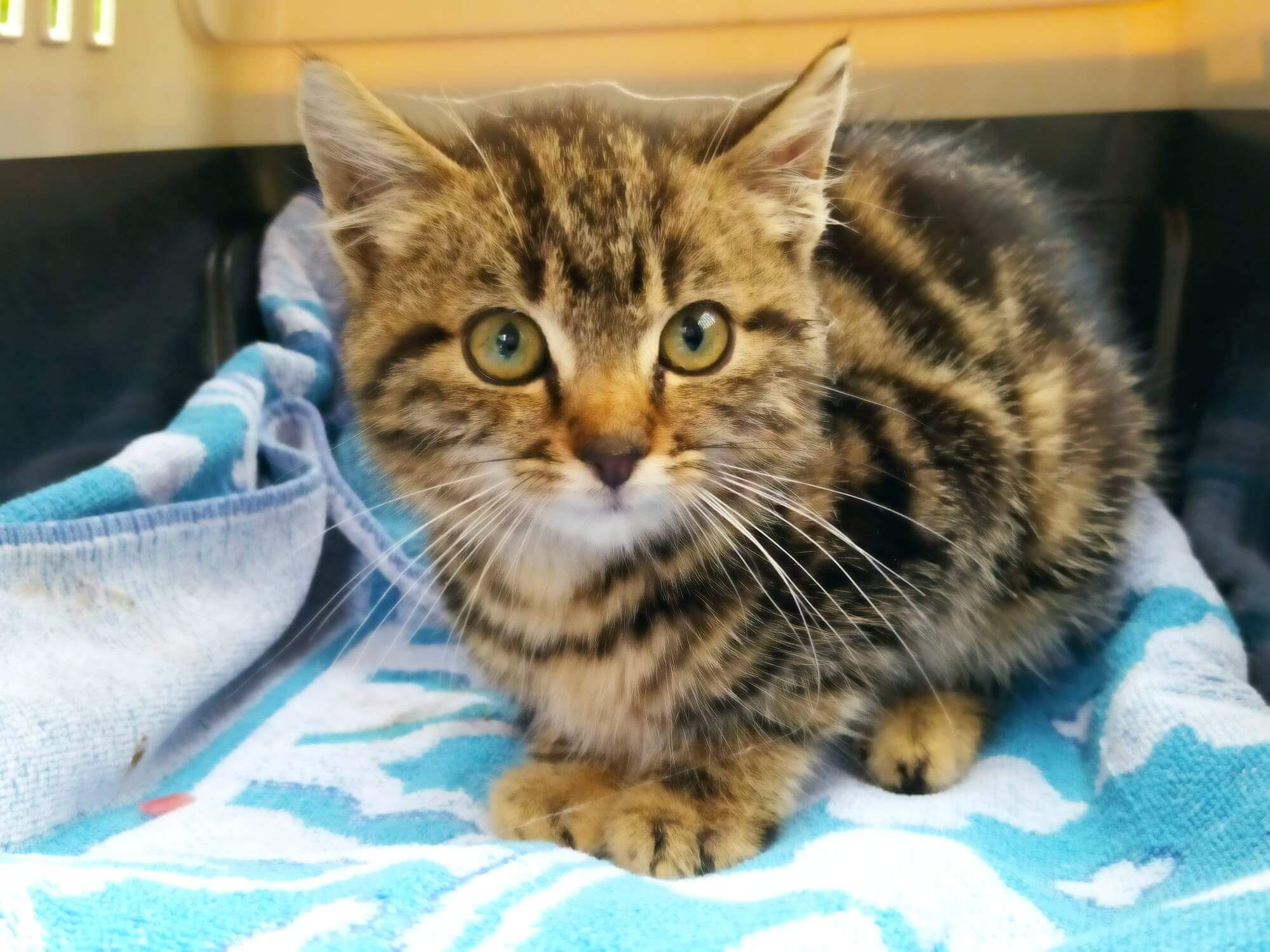
“On average, we take around 60 calls per day,” says Tatjana, as she shows Total Croatia News around their operations in Dumovec. Cats wander freely around the shelter's offices. Outside, a long line of excited dogs - temporary visitors waiting to be adopted. “Around 10 of those calls will be about wildlife. The others will be about domesticated animals and could come from members of the public, neighbours, the police or social services.”
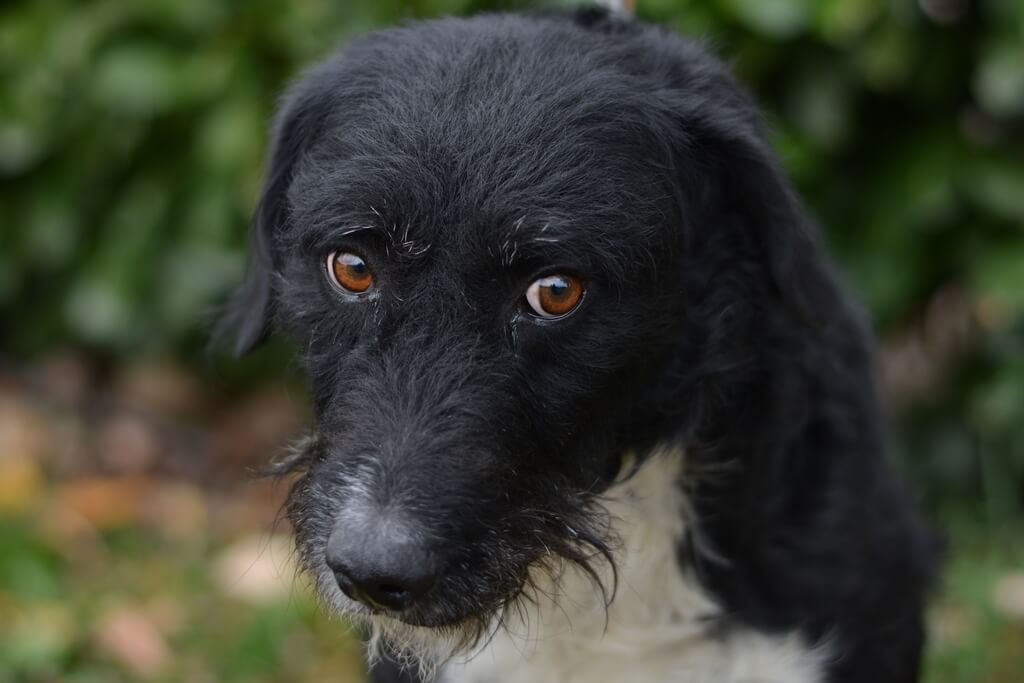
“They're not always calling about dogs and cats. We are asked to come to collect pigs, ducks, geese and chickens, even though you're not really supposed to be keeping such animals when you live within city limits. Also sheep. In fact, we had one sheep just last week. She was tied to a tree in a city park. The police called us. But, by the time we got there a guy had arrived from the local pub and claimed it as his sheep. He'd tied it up in the park while he went for a drink.”

When Azil Dumovec are contacted about an animal emergency, their phone operators must decide what to do. If the call is about a regular domesticated house pet, like a dog or a cat, the animal is brought to the centre in Dumovec, checked by their vets and given a temporary home until a new one is found. If the call is about a more exotic or wild animal, Azil Dumovec will despatch a responder to collect it and take it to the Wildlife Rehabilitation section of Zagreb Zoo. The other option is to transfer the animal to AWAP (Association for Wild Animals Protection), a charity rescue centre for confiscated and injured protected animals.
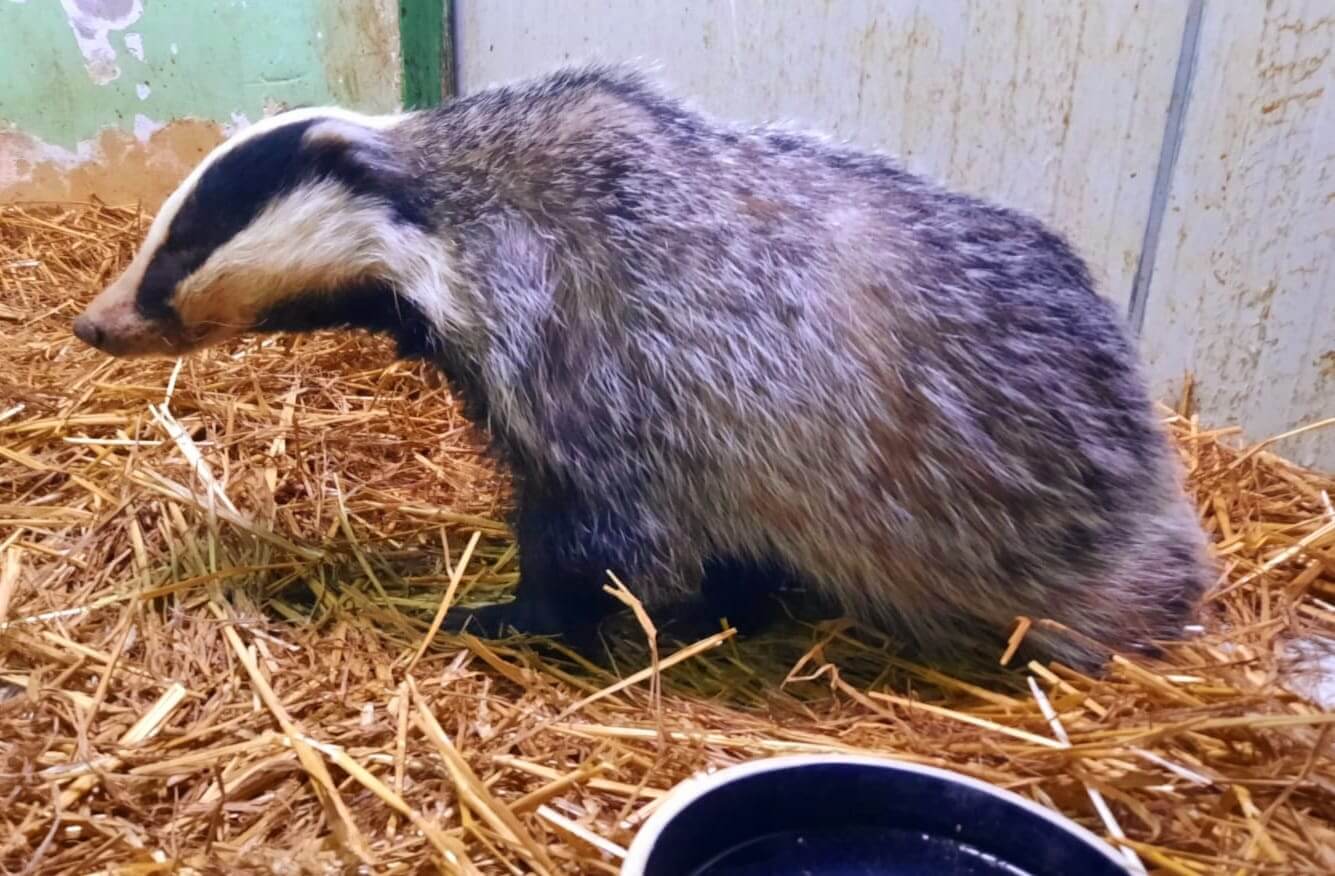
“We deal with bats, badgers, beavers, deer, snakes, you name it,” says Tatjana. “Occasionally we even see some venomous snakes like poskok (Horned viper - Vipera ammodytes). Usually, they live in the area of Medvednica. But, several times we've been called to remove them from Zagreb houses. They crawl into basements and sometimes cars to escape from bad weather.”

“A lot of the calls we get are because wild animals share parts of the city with people,” she says. “And, many of the people who live here just don't understand it. They don't know what to do. For instance, they might have a bird or a bat that makes a home for itself on their balcony. Or they might be startled by the sight of a family of foxes living on the embankment. We know one deer who likes to come to an area near Cibona Tower, very close to the city centre. He comes every year. I think it's maybe a student accommodation place. We always have so many calls about him.”
Sandrino, Tatjana's co-worker shakes his head. A veteran worker at the shelter, Sandrino used to work outside with the animals. Now, he answers the phone in the call centre.
“This is cleaner,” he tells TCN of his new position. “But, honestly, it's better to work outside with the dogs.”
Why?
“Different kinds of people call you,” he says. His emphasis is on the word 'different'. He's being polite.
“Well, it's a big town,” he adds, with a shrug and a smile. “One guy found an injured pigeon. We had to send it to AWAP. He asked “Can I come to visit him?”, like it is some kind of hospital with visiting times.” Sandrino laughs.
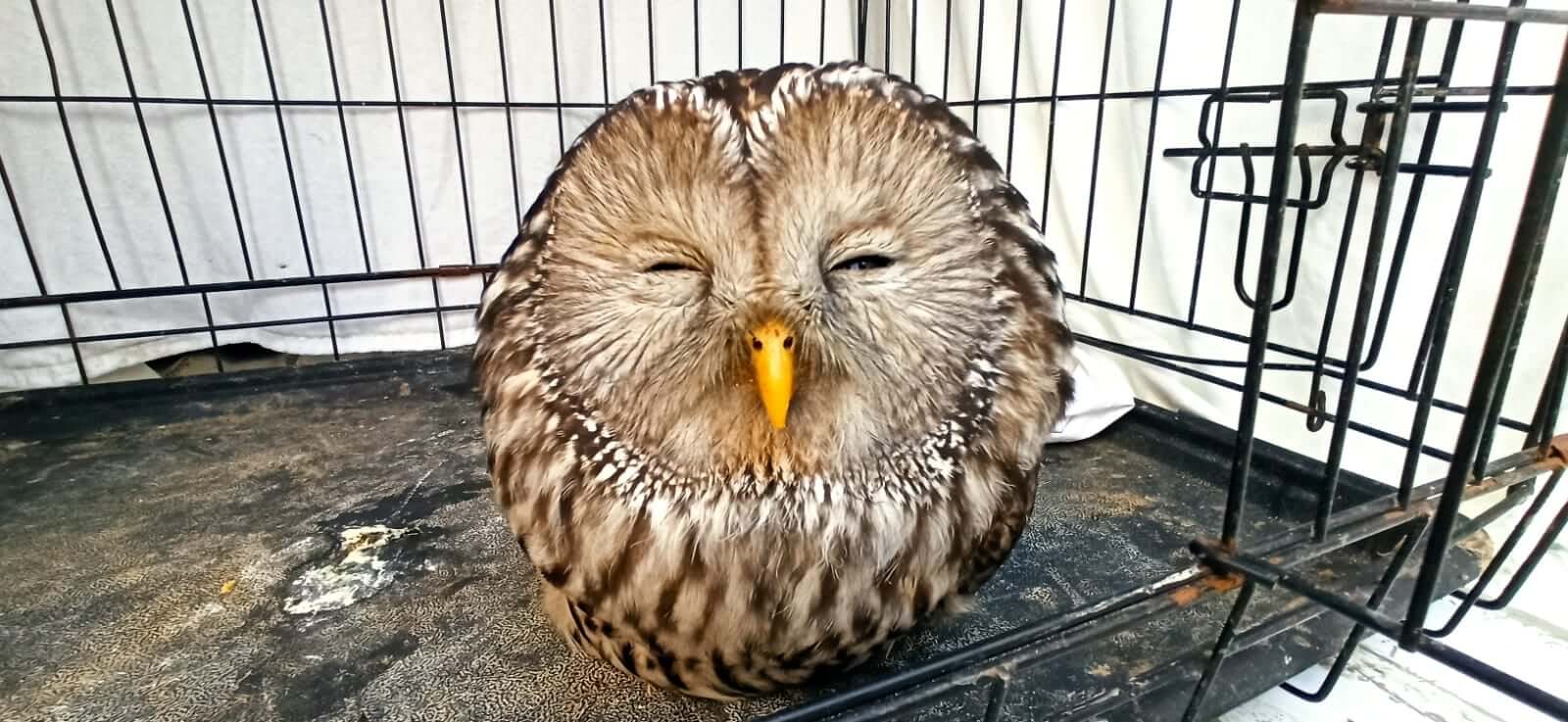 Another owl referral to Azil Dumovec. This one, collected on 3 December, was found near Koprivnica
Another owl referral to Azil Dumovec. This one, collected on 3 December, was found near Koprivnica
Tatjana herself has also seen her role change significantly during her time here. Originally, she graduated as a veterinary doctor. But, since joining Azil Dumovec, she's become shelter manager and helped them shape Croatian law and embrace the social media revolution.
“Actually, we took some inspiration from the UK,” she recalls. “After graduation, I contacted the RSPCA and the Dog's Trust to learn how they did things. Thereafter we became a 'no kill' shelter. Our next step was to lead the call for our Animal Welfare Law in Croatia to be changed. We succeeded and after that, all Croatia's shelters became 'no kill', like us.”
 Dario Buzjak visits the owl he found at Zagreb Zoo
Dario Buzjak visits the owl he found at Zagreb Zoo
In the hours following Dario Buzjak's owl discovery, it seemed like half of Zagreb knew about his story. Photos of the owl taking a ride on Dario's Zagreb bus hit Facebook and Instagram first. The next day, TV and newspaper reporters were dispatched to Zagreb Zoo where they interviewed Dario visiting his new friend.
“Today, our social media accounts are a very important part of our communications,” says Tajana. “We dedicate quite a lot of time to them – posting photos, getting the stories and following up. But, in the end, it's totally worth it. These social media channels are the reason we have the highest rehoming rates in Croatia. We rehome over 1000 animals every year.”
 Cute photos on social media. Time-consuming but effective.
Cute photos on social media. Time-consuming but effective.
You can find out more about Azil Dumovec from their website here, their Facebook here or their Instagram here
All images courtesy Azil Dumovec
Porec Swans: Croatia As a Year-Round Residence for These Lovely Creatures
April 2, 2021 – This winter, Porec got two new discreet white tenants, a pair of swans, often seen in Peškera Bay. Due to the great interest, experts from the Porec Center for Invasive Species bring interesting facts about these wonderful, protected birds – Porec swans.
Written by: dr.sc. Barbara Sladonja, dr.sc. Danijela Poljuha, and mag.oecol. Mirela Uzelac.
Faithful couples
This pair of swans belong to the species of red-billed swans (lat. Cygnus olor). In English, they are called "mute swans" or silent swans because they are the quietest of all swan species.
The mute swan is one of the largest birds that can fly. They feed primarily on underwater vegetation, grass, algae, and the like and sometimes eat smaller fish and insects. You can feed them with pieces of bread or cereals such as wheat or corn. They catch food by diving into the water with the front of the body and the neck outstretched while the body's back protrudes into the air. They eat up to 3-4 kilograms of food a day!
They usually live in pairs their whole lives. Because of their faithful love and their necks that they can bend in the shape of a heart, they have become a symbol of love and fidelity, and an inspiration for many art and literature works.

Pixabay
Where did they come from and why?
Swans are migratory birds, which means that they migrate from the nesting area (northern areas) to the wintering area (southern areas) and back every autumn. They fly in a flock. Sometimes, due to fatigue, the couples stand out and decide to spend the winter on the shores of warmer seas. They fly at speeds of up to 90 km/h and cross 1000 km to the nesting site.
Swans are spread in almost whole of Europe. Their number has increased in the last 50 years, and their area of residence and nesting has expanded. From just an occasional winter resort, Croatia and the Mediterranean have become their year-round residence.
Therefore, they spend the winter in Croatia more and more often. Since the early '90s, they have been nesting here. You can usually see them on inland lakes and in isolated places along the Adriatic coast. They inhabit areas of calm and slow freshwater, such as ponds, lakes, and swamps. You can also see them in brackish lagoons, salty bays, and on quiet shores. They are becoming more common in cities as well.
Our pair of swans chose Poreč because of the pleasant climate, beautiful city, and maybe the heart-shaped symbol on the Peškera Bay, which was a lure for our gorgeous tenants.

Easter decorations on the Peškera Bay in Poreč / The City of Poreč - Parenzo
Will they stay in Porec permanently?
Swans came to Poreč to spend the winter, and whether they will stay depends on whether they decide to nest here. If they choose to do so, the couple builds a nest together and keeps the birds. During that period, the male can be aggressive to protect the family. They nest from March to August near water, in shallow water, in aquatic habitats with reeds, cattail, or other aquatic vegetation, and sometimes in protected bays. There are not many such isolated habitats in Poreč, so they may decide to leave us, at least until next autumn.
And one more thing – although we are sure that we will all be hospitable and restrained towards them, let's not forget that the mute swan is a protected species in Croatia. Therefore, any intentional harassment, nest damage, egg destruction, injury, and similar actions can be punished.
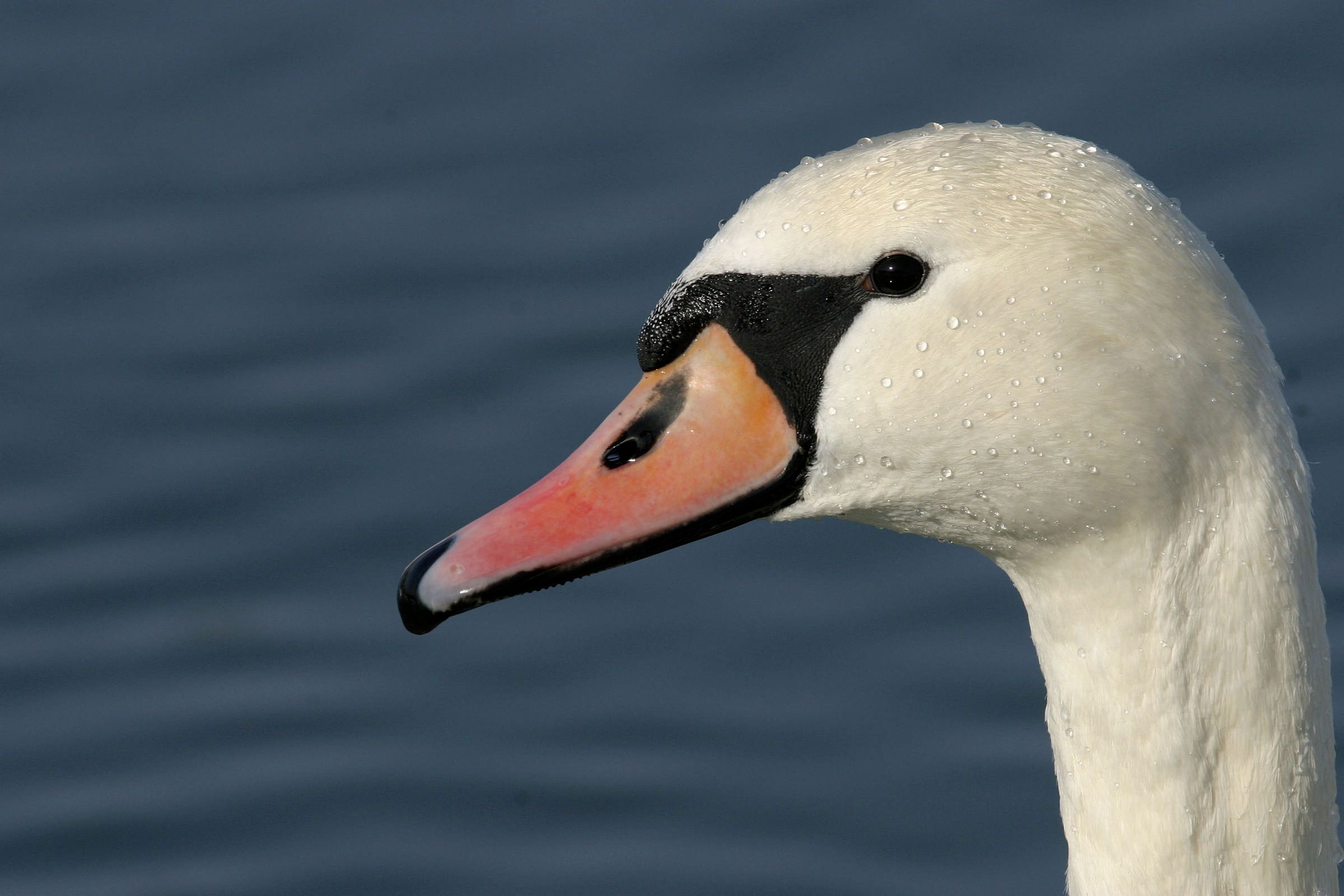
Romulić & Stojčić
Source: Poreč.hr
To read more about Poreč, check the Total Croatia article Poreč in a page.
VIDEO: Drone Reveals Super Close Encounter Beneath Zadar Whale Chasers
March 5, 2021 – Two locals look fragile and exposed against the gigantic secrets of the sea beneath them as newly revealed drone footage shows a super close encounter for Zadar whale chasers
Upon hearing a whale had strayed in the Karin Sea, Igor Goić and Sandra Župan, decided to set off to try and get a closer look. They became Zadar whale chasers for the day. On 4 March 2021, Croatian media Vecernji List described the pair as great lovers of travel and exploration of natural beauty.
A couple of months ago, the Zadar whale chasers travelled to the bay, some 30 kilometres from the city, to try and catch a glimpse of the sizeable mammal. Two days ago, they published a drone video from the day which made them realise only now that the whale was much closer to them than they thought.
Zadar whale chasers spoke to the media
“Last year, on October 10th we followed a fin whale that got sidetracked in Karin bay. We thought that the closest he got near us was around 5-6m. Today, by checking some footage from the drone we found this,” they wrote on Instagram.
The Zadar whale chasers' drone footage was transferred to processing software, which sharpens the contrast and "fixed" the colours a bit. This allowed the pair to find out they were much closer to the whale than they previously thought. In fact, he passes directly beneath the Zadar whale chasers boat.
“When you are in a kayak, low above the (water) surface, you do not see anything from the empty glare,” said Zadar whale chasers cameraman and director Igor Goić to Morski.hr “and as we tested with the paddle, the visibility was maybe up to 2 meters (when you dip the whole paddle you can't see the other end).
Goić explained to the media that not only had the fixed footage revealed the surprise and previously unknown passage of the animal beneath them. There is also another shot where it comes alongside the Zadar whale chasers kayak and then turns on its side for a minute so it can watch them. Getting up close to nature is one thing, but when your kayak is dwarfed by such an amazing creature of the sea, perhaps some nearness is too close for comfort.
For the latest travel info, bookmark our main travel info article, which is updated daily.
Read the Croatian Travel Update in your language - now available in 24 languages.
Dinaric Karst Caves World's Richest In Species, 70% Indigenous To Croatia
February 8, 2021 – The Dinaric karst caves found intermittently down the length of the country's coast are the richest in the world when it comes to species that live within them. Many of them are extremely rare, with 70% of them being indigenous exclusively to Croatia
Dinaric karst caves are one of the best-kept secrets of Dalmatia. While the majestic Dinaric Alps are an ever-present backdrop within holiday photos taken on the Croatian coast, the Dinaric karst caves and cave systems that can be found intermittently running through them remain little known, explored only by a handful of expert speleologists and biologists. And, that is how it should remain, because they are teeming with very rare species.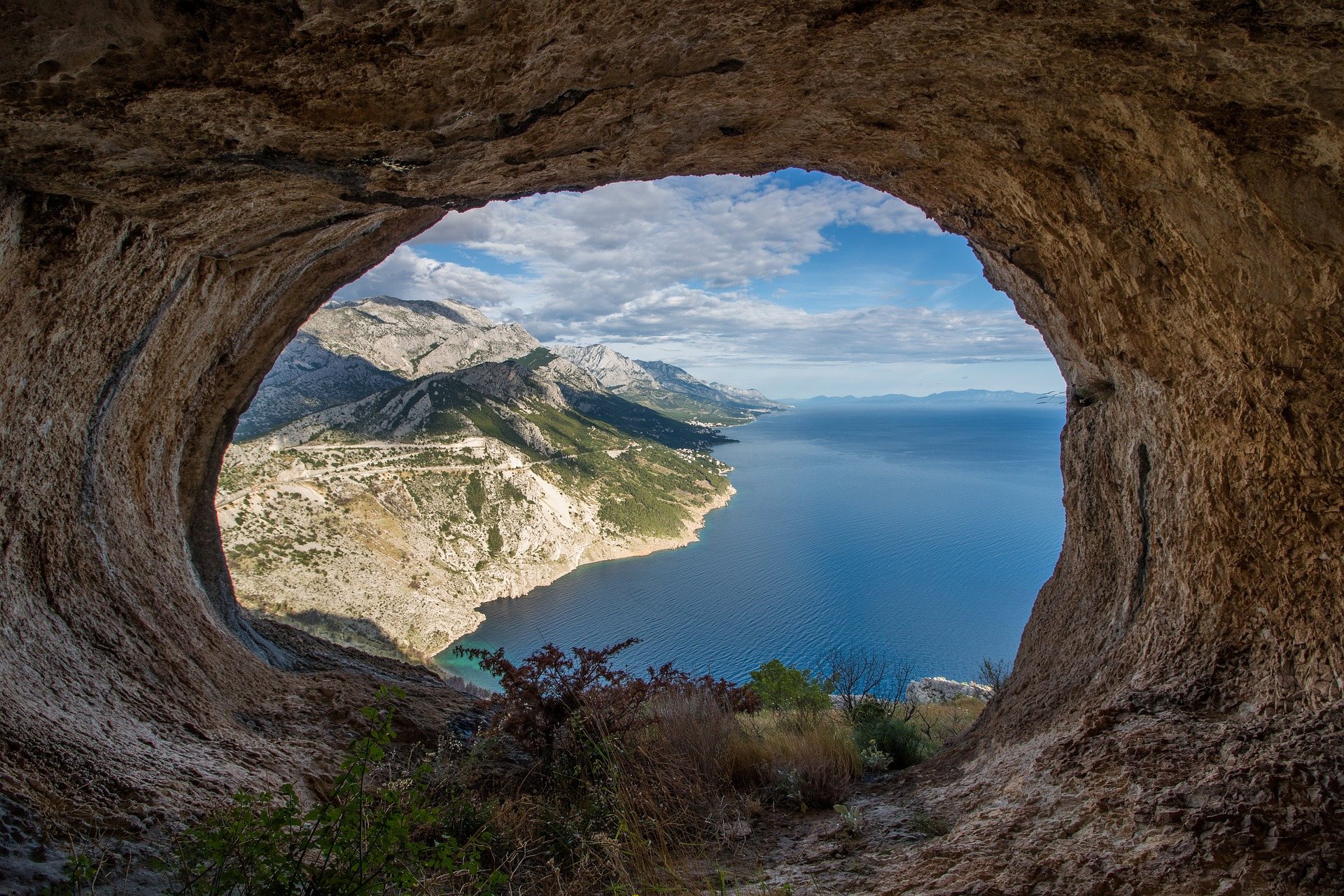 A cave in the Dinaric Alps in Dalmatia
A cave in the Dinaric Alps in Dalmatia
Croatia's Dinaric karst caves are the richest in the world when it comes to species that live within them. Many of the creatures that live in Dinaric karst caves are extremely rare, with 70% of them being indigenous exclusively to Croatia.
Having evolved over millenia to life in the darkened environs of Dinaric karst caves, the animals that inhabit this subterranean ground once lived above-ground and were much more common. The tough, lightless conditions of Dinaric karst caves meant that only those who were strong enough to adapt would survive, developing new features or losing others in response to their habitat.
Recently featured in TCN because it is up for 'Mollusc of the Year', the rare Congeria Kusceri is a classic example of how Dinaric karst caves have changed in response to their environment. The mollusc lost its pigmentation and any sense of sight due to having a lifetime bereft of sunlight.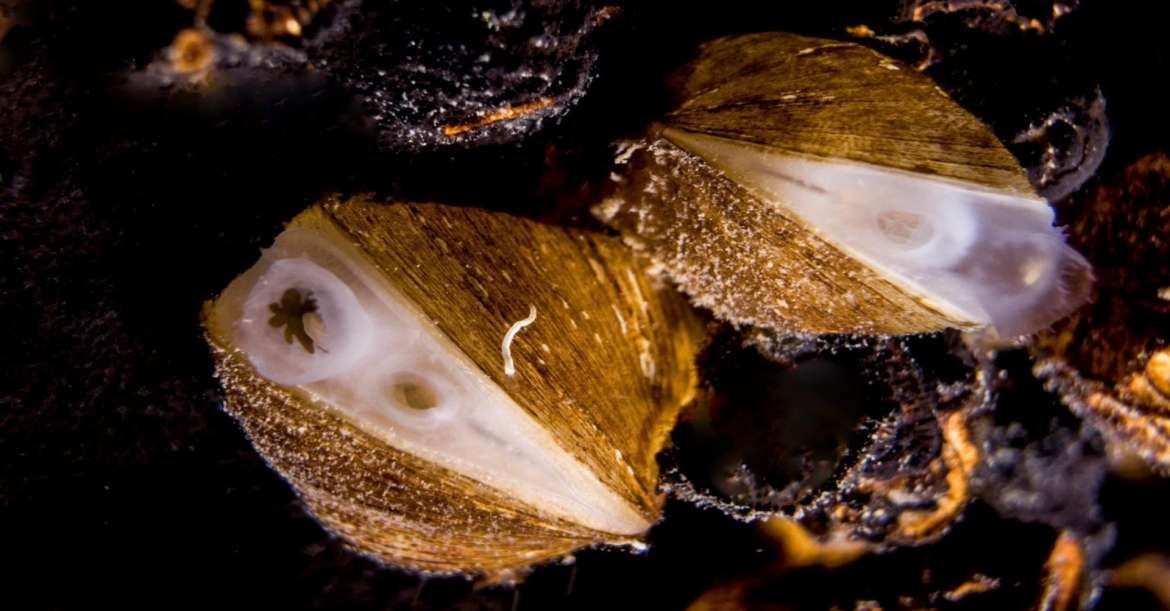 Congeria kusceri © Vedran Jalžić
Congeria kusceri © Vedran Jalžić
According to a recent article published by National Park Krka, who themselves have many rare species and Dinaric karst caves, other classic characteristics of the evolutionary process on Dinaric karst caves species include a thinning of the integument (the protective outer layer, shell or skin), lengthening of body parts, slow metabolism, life longevity, low reproduction, accumulation of fat reserves, reduced aggression, cessation of day-night rhythm, cessation of seasonal changes and activities, and changes in brain structure.
186 Dinaric karst caves species have been endangered according to the endangerment criteria of the International Organization for Nature Protection (IUCN). One of the biggest threats is the pollution of their underground habitats. Therefore, some of caves have been recognised at a national and at an EU-level as being natural habitats of special interest and marked as off-limits. About 400 speleological objects are listed under Caves and pits closed to the public (code 8310) and 220 under Overflowing or partially flooded sea caves (code 8330).
But, for those interested in discovering the hidden network of Dinaric karst caves within Croatia, there are many which are accessible and open to the public. Official guides and several speleology associations are available to reveal these secret subterranean lairs. What you see inside might be just as spectacular as how these mountains look in the background of your holiday snaps.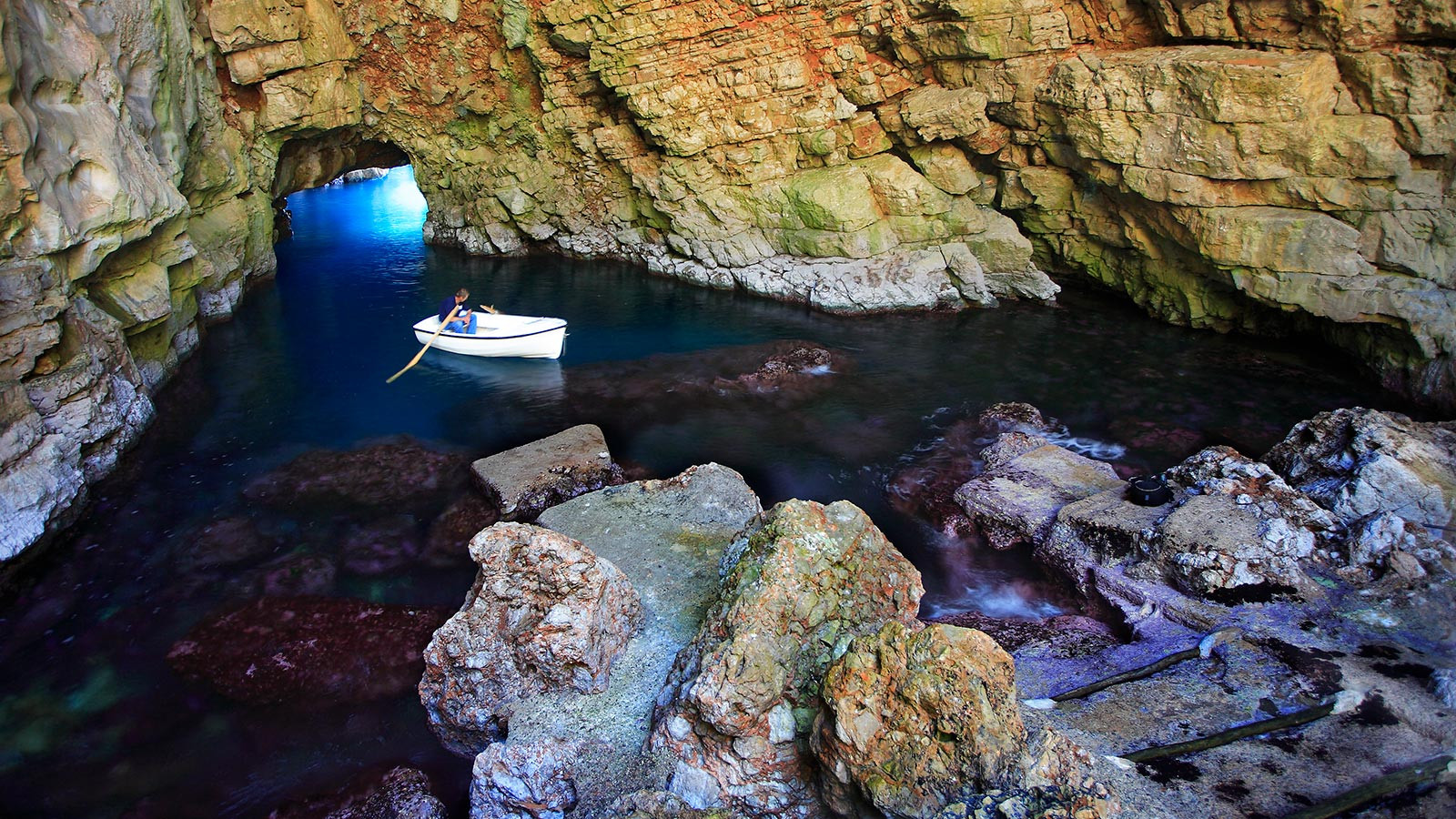
The Ulysses cave on Mljet island, one of the many caves in Croatia which is accessible to the public © TZ Mljet
VIDEO: Family of Zadar Sheep Visit Shopping Mall, Looking for Woolmart?
February 5, 2021 – Visitors to a mall in Dalmatia were yesterday surprised to see their shopping trip shared by a family of Zadar sheep, who were filmed strolling beneath the logos of famous brands. The video became a big hit on social media
The people who inhabit Croatia's coastal region of Dalmatia like to take pride in the good things they have. And well they might. Their region is beyond-beautiful – a long stretch of idyllic coastline and islands, sat before pristine seas, with a spectacular mountain backdrop behind which a wealth of culture, tradition, nature and authentic Croatian cuisine lie.
Part of that cuisine is lamb. Dalmatia lamb is highly prized – indeed, indeed the lamb from Dalmatian island Pag, and that of the Lika region is protected at an EU-level tied to its place of origin. But, those are not the only places in Croatia that have fantastic lamb. Within many of Dalmatia's foothills, you'll find sheep and shepherds. Zadar sheep are just some of those who graze on grasslands around Dalmatia's cities, towns and villages. Well, usually they do.
Over recent days, one family of Zadar sheep quit the quieter areas on the edge of the city suburbs and descended on the town. They were caught on video taking a stroll around the car park of a popular mall on the edge of the city. Filmed in front of the familiar logos of Interspar and McDonalds, you can imagine they have just finished a round of shopping and are now heading back home.
Perhaps they imagined the mall to be a Woolmart outlet? We're not the only ones to wonder. The Zadar sheep family was incredibly popular yesterday on the Facebook site Dnevna doza prosječnog Dalmatinca. Views of the Zadar sheep gone shopping are approaching 10, 000 views. Over 2000 left comments, such as “They also go to Zara!” and "here's a lot of symbolism here."
It would seem that images of the shopping Zadar sheep stuck in people's minds throughout the day. In a later Facebook post on Dnevna doza prosječnog Dalmatinca, a supermarket shopping trolley was pictured abandoned by the traffic lights of a road junction elsewhere in Dalmatia. Some wondered in the comments section whether it could be that of the Zadar sheep, who had forgotten to return it to the mall after their shopping spree.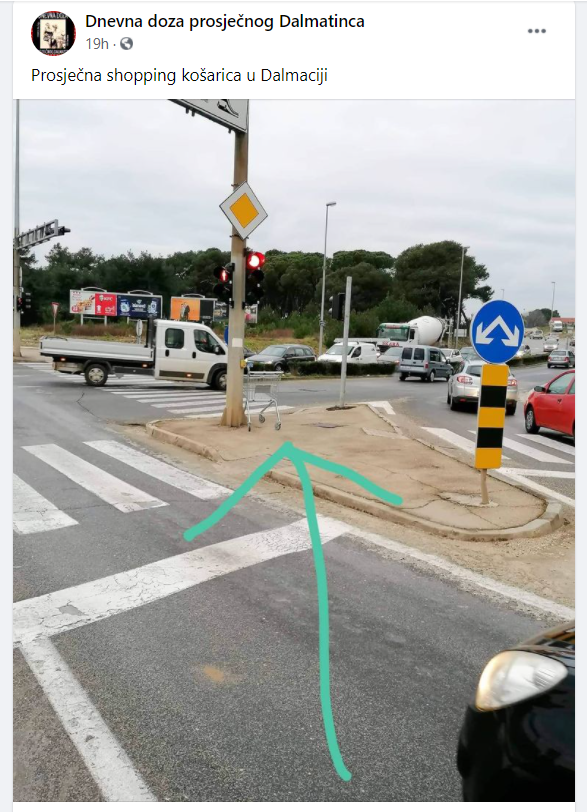 Dnevna doza prosječnog Dalmatinca Facebook screenshot
Dnevna doza prosječnog Dalmatinca Facebook screenshot
VIDEO: Stunning Aerial Footage of Dolphin Family in Zadar Archipelago
February 1, 2021 – The Adriatic might be too cold for us right now, but conditions are perfect for this dolphin family, spectacularly captured gliding through glacial, undisturbed waters by an overhead drone
The Adriatic might be too cold for us right now, but conditions are perfect for this dolphin family, spectacularly captured gliding through glacial, undisturbed waters by an overhead drone
The footage of the dolphin family was captured spectacularly by keen amateur drone photographer Davor Miljkovic. Davor, who is from Zapresic, usually puts his eye for aesthetics into website design – he works as a PHP website developer for Virtus dizajn in Lanište, Zagreb and as a freelance website developer. But, he is currently taking advantage of working remotely and was able to catch footage of the dolphin family during his off time.
“I live in Zapresic but my grandmother is from island Rava, near Zadar,” Davor told TCN on 1st February 2021, two days after he posted the video of the dolphin family to his Youtube channel. “So, we have a house here by the sea. My fiance and I spend part of the winter here and we are here all summer too.”
The Zadar archipelago (in Croatian Zadarski arhipelag) is an incredibly picturesque group of islands off the coast of the city of Zadar. In addition to island Rava, off which Davor saw the dolphin family, the archipelago also consists of the islands Dugi Otok, Galešnjak, Iž, Lavdara, Ošljak, Pašman, Rivanj, Sestrunj, Tun Veli, Ugljan, Vir, Vrgada, Zečevo and Zverinac.
The beautiful stretch of islands is usually very popular with summertime visitors. It would seem that it's also popular in wintertime with visitors who live in the sea. And, of course, people like Davor who are lucky enough to catch sight of them.
For the latest travel info, bookmark our main travel info article, which is updated daily.
Read the Croatian Travel Update in your language - now available in 24 languages
VIDEO: Man Takes His Pet Chicken Shopping in the City Streets of Split
December 10, 2020 – Why did the chicken cross the road? Well, to go to the dućan (store) with his owner, of course! Residents bewildered to see one man taking his pet chicken shopping in the city streets of Split.
Understanding Croatia is often like looking through a kaleidoscope – the closer you look, the more it shifts in and out of the focus of comprehension. Nowhere is that more true than in the seaside city of Split.
Visitors are not the only ones to see this. Split's inhabitants know it too. Despite its reputation for the unorthodox, happenings in Split are still capable of raising the eyebrows of those who live there. And, that was certainly the case a couple of days ago, when residents of the Gripe neighbourhood were bewildered to see one man going shopping accompanied by his pet chicken. Their casual walk to the shops, which sees the pet chicken being led on the kind of leash you'd more usually find on a dog, was captured on video. It is one of the more curious chick flicks TCN has seen this year.
Gripe in Split is a family neighbourhood, known for its sporting facilities and the old fortifications which lie on the hill after which it is named. Even in times of social distancing, it's not uncommon to find neighbours milling around, chatting to each other on a weekend morning. Their idle gossip was given egg-stra fuel on Saturday when the man and his pet chicken made their remarkable hen-trance.
As the weather across Croatia turns colder, this is the traditional time for pigs to be turned into the sausages and bacon that will last through the winter. The chickens and turkeys are safe for now, although only for another week or so. Perhaps this timing egg-splains the walking of the pet chicken? Maybe the owner didn't want to let the prize bird out of his sight so close to Christmas? Or perhaps, given that a camera seems to have been at the ready to film their exploits, the walking of the pet chicken was just a welcome moment of tomfoolery? Whichever it may be, the footage does have an endearing quality. Poultry in motion, if you will.
Spellbinding Waltz of Dancing Springtail: New Species Discovered in Krka
December 3, 2020 – New species, the Dancing Springtail has been videoed performing the fascinating and unique dance from which it takes its name. This recent discovery is so far absolutely unique to one quiet corner of Croatia's Krka National Park
It takes all sorts to make the world. In modern-day America, this is more usually said 'It takes all kinds to make the world go round'. But, this famous saying is older than the United States of America. It comes from the Spanish novel, Don Quixote, published in 1605 and written by Miguel de Cervantes - 'de todos ha de haber en el mundo' (literally, 'there must be of all [types] in the world'). Nowhere is this historic phrase more applicable than in biodiversity.
Bugs are often not the prettiest of creatures. We really don't like it when they come into our homes. But, as TCN learned in our recent article on Stinky Martin aka Smrdljivi Martin, every indigenous species has a role to play in our ecosystems. No matter how unsightly, every bug has its rightful place.
The Dancing Springtail, discovered living in a micro-section of Krka National Park, is not beautiful like a butterfly. Its silver body displays no bold colours capable of catching the eye. But, it does have its own mesmerising dance. And, so far, it is absolutely unique, not only to Croatia but to one tiny corner of Krka National Park.
Observed and recorded in video two years ago, the Dancing Springtail has now been classified and given its own name - Lepidocyrtus chorus, the second word pertaining to the curious waltz the Dancing Springtail is seen to do. Thought to relate to its feeding, diet and possibly digestion, the Dancing Springtail makes a circular movement with its abdomen, while keeping its head in one position. It rotates in both directions. This dancing movement is unique to this Croatian sub-species.
The Dancing Springtail was spotted and specimens collected from the old stone steps in the area of HPP Miljacka in Krka National Park. The stairs are usually damp, partially covered by overhead trees and overgrown with lichen and moss. This particular area of the Krka river canyon, around the Miljacka waterfall, is of exceptional importance to Krka National Park, due to the mix of caves and water features which occur there and the biodiversity within the area. For these reasons, this area is off-limits to the public. The Dancing Springtail has, so far, been seen nowhere else in the world.
The body length of the Dancing Springtail, minus the head, is 1.7 mm. The top of the body is covered with silver scales, but upon closer inspection, it has dark purple spots on the sides of its fourth abdominal ring. On its head, between the antennae, there is a purple-colored patch, roughly in the shape of a triangle.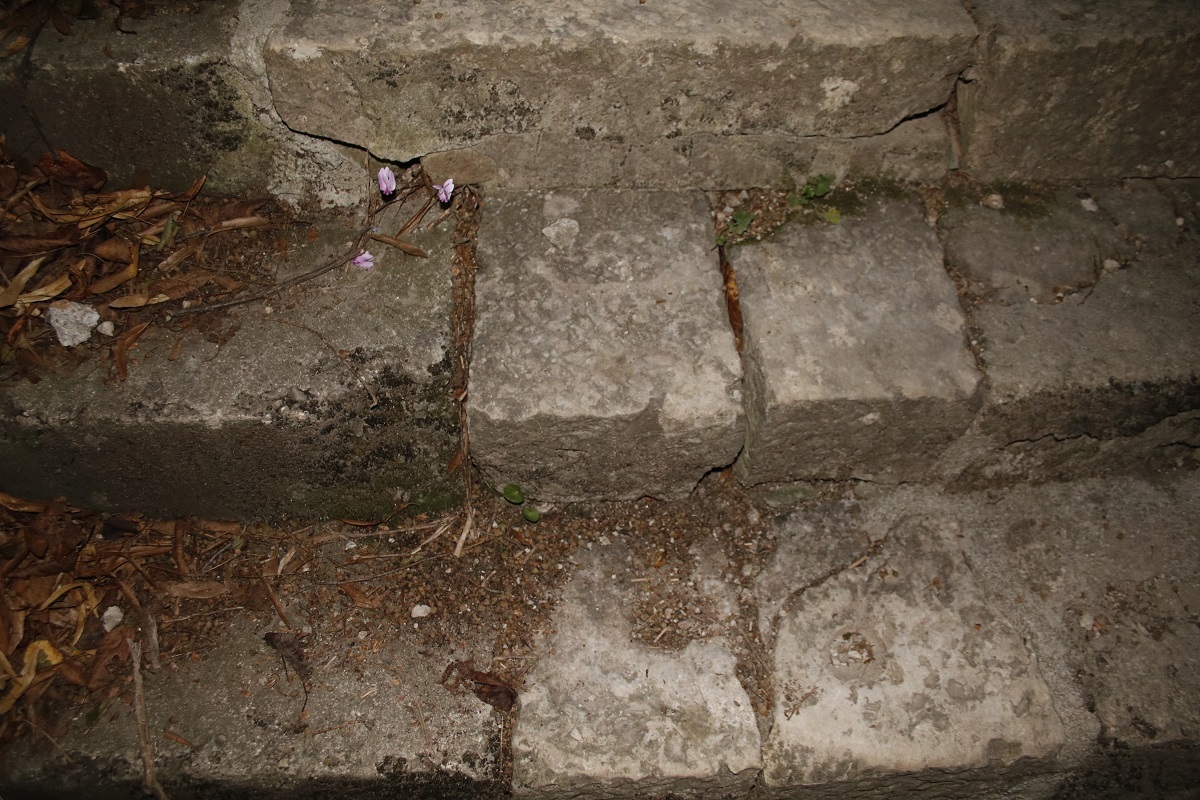 The steps near the Miljacka waterfall where the Dancing Springtail was discovered © Krka National Park
The steps near the Miljacka waterfall where the Dancing Springtail was discovered © Krka National Park
The Dancing Springtail is a sub-species of a wider family of hexapods known as Springtails or Collembola (Skokuni, in Croatian). These bugs are no longer classed as insects, because their mouths are internal, rather than exposed. There are about 3,600 different species of Springtails. They have been observed to feed on leaf litter, fungal hyphae, spores, pollen, animal remains, colloidal materials, minerals and bacteria. In doing so, they assist the decomposition process of natural areas. They are reputed to be one of the most abundant of all macroscopic animals, with estimates of 100,000 springtails living in every square metre of ground. Anywhere there is soil, you can dig and surely find them.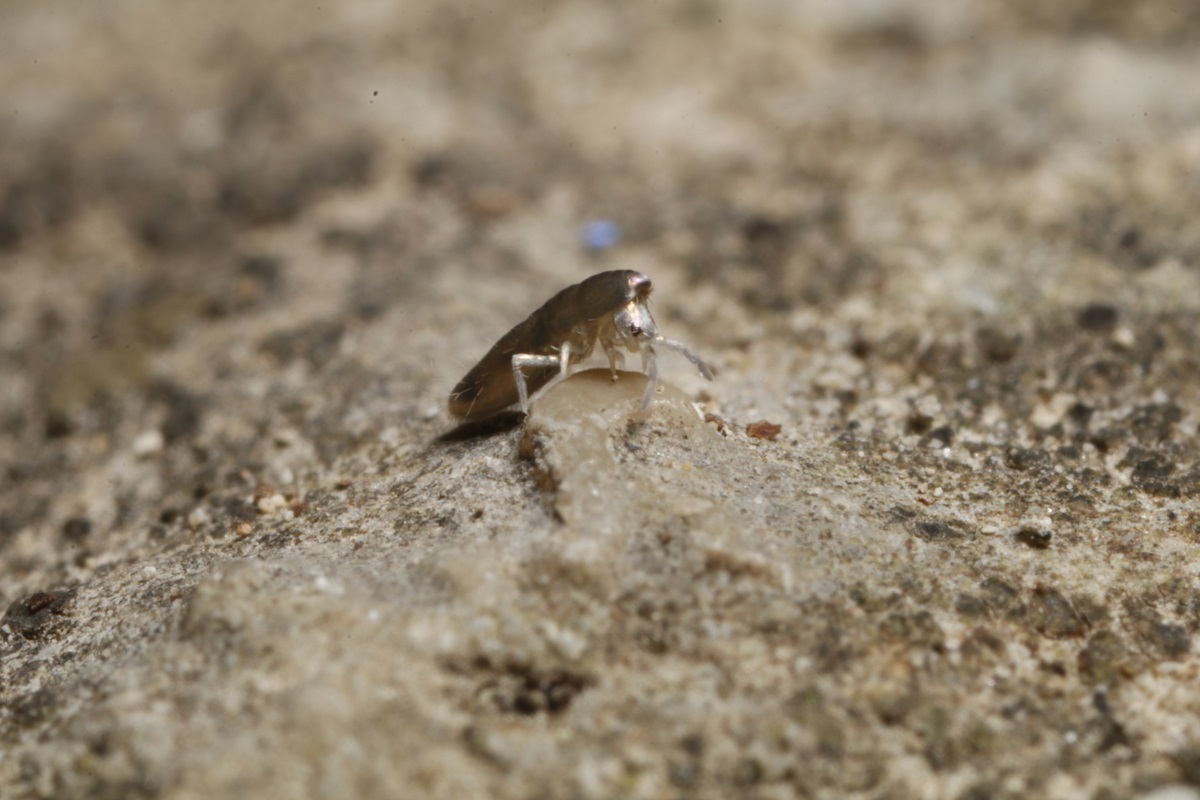 A Dancing Springtail © Krka National Park
A Dancing Springtail © Krka National Park
Springtails get their name from an appendage they have on their abdomen which is held under constant tension. When released, the appendage allows them to fling themselves high through the air in as little as 18 milliseconds. They use this jump as a defensive mechanism and in order to migrate to fresh feeding grounds. The appendage makes springtails one of the best jumpers on the planet.
Springtails possess the ability to reduce their body size by as much as 30% in response to rising temperatures in their environment. Warmer conditions increase their metabolic rates and so the decreasing of their size helps them survive. Springtails are good bio-indicators of soil quality and are currently used in laboratory tests for the early detection of soil pollution. Rumours persist that the United States investigated weaponising springtails for use in biological warfare, indeed that they were used for such a purpose in the Korean War. No widely-accepted proof of this usage exists.
Via the study of fossils, we know that springtails have been on the planet for at least 400 million years. If the Dancing Springtail of Krka National Park has been around for that long, its unique movement is probably the longest-running dance in the world.
Reality TV Star Jasmin Raises Orphaned Fox as Family Pet
December 1, 2020 – 22-year-old Jasmin Kunišinac, a former contestant on the reality TV show Farma, is raising an orphaned fox in his family home. The pair are local celebrities in Vinogradci, near Valpovo, Slavonia, thanks to their walks around the village, and also quite the hit on social media too
It's not unusual for Slavonian people to feel connected to the land and nature which surrounds them. The rich soils of the Pannonian basin in east Croatia often provide an occupation for at least one family member. Certainly, these soils will put food on the family table. The family of 22-year-old Jasmin Kunišinac, who live in Vinogradci, just west of Belišće and Valpovo, is no different. Jasmin's always felt connected to the land.
You could tell as much from Jasmin's 2018 appearance on the Croatian reality TV show, Farma. Upon entering the show, he was described as not lacking experience of life in a rural village. Viewers were told that, in his free time, Jasmin liked to ride, fish, hang out with friends and help abandoned animals. He said his favourite animals were horses and foxes. Jasmin and Odi
Jasmin and Odi
Since early 2020, Jasmin's fondness for foxes has been evident for the 250 or so residents of Vinogradci to see, as he has taken on responsibilities for an orphaned fox. Villagers see him taking the fox, Odi, for walks around Vinogradci on a lead.
Vinogradci is focussed around three small streets, down which Jasmin and Odi walk. The houses are narrow at the front, elongated and stretching back away from the street. Behind them, long gardens stretch even further, often containing vegetables, fruit trees, animals or additional buildings for food production. The name of the settlement itself means 'vineyards'. The quiet streets of Vinogradci, where Jasmin takes his fox Odi for walks © Grad Belišće
The quiet streets of Vinogradci, where Jasmin takes his fox Odi for walks © Grad Belišće
It is exactly the sort of land where wild foxes like to roam. By those who keep chickens on their land, these foxes are not always welcome.
Jasmin and his cousin found Odi by the side of the road at the beginning of the year. The pair had been cycling to their grandmother's when they came across the fox cub who, at that time, was no more than a couple of months old. They found the remains of Odi's mom not far away. She had been shot.
The pair decided to take Odi home and fed the fox with milk from a bottle, in much the same way you might a baby child. Jasmin's mum was less than thrilled. Her's is a household already quite full. As well as mom and dad, Jasmin has three sisters and a brother at home. And that's without even mentioning the other animals they have.
Thankfully, as Odi has become domesticated, he seems to have fit in with family life. He plays with the Kunišinac's Rottweiler and even their chickens seem to have got used to the sight of him. Jasmin's six-year-old sister particularly loves playing with Odi, who is more lively as the daylight begins to fade - foxes are nocturnal animals.
Odi and Jasmin are not only celebrities thanks to their walks around the quiet streets of Vinogradci. Thanks to folks' familiarity with Jasmin on the reality show, Odi has become quite the hit on social media. In addition to Jasmin acquiring more followers on Facebook thanks to the fox's arrival, Odi has attracted some 18,000 views on TikTok.
This is not the first fox that the Kunišinac family have taken in either. Jasmin's dad found one while he was out fishing, which they cared for before he left to be cared for at the zoo in Nasice. Given the foxes fondness for the fields around Vinogradci, there's no telling if Odi will be the last fox to be taken into their home. Who knows, the Kunišinac family and their foxes might create a long-running rural series as popular as Farma.
All photos taken from Jasmin Kunišinac Facebook
Sailor from Vis island finds a Crocodile on his Boat
November 27, 2020 – Vis islanders are these days not surprised to receive guests who come from all over the world, but the mysterious arrival of a crocodile has raised eyebrows and caused big-teethed smiles
For thousands of years, the inhabitants of Vis island have led a comparatively unharassed existence. They fished in the richly stocked waters that surround them and planted vines and other crops in the island's soils, such day-today activities unaffected by whichever empire decided to lay claim to the rock. Being the inhabited island which lies furthest from the Croatian mainland might have contributed to so many carefree days. That's not to say that nobody ever goes there.
Today a popular tourist destination, over the last few decades Vis island has welcomed visitors from all over the world. Although, the latest exotic arrival doesn't look to have come by budget airline. Found on a boat near the village of Brgujac, a young crocodile has caused bewilderment among island residents over recent days.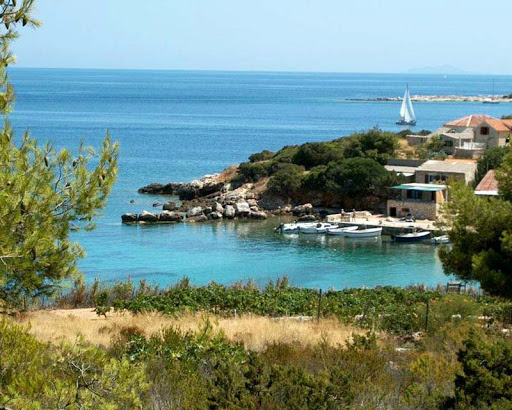
Brgujac. The epicentre of Vis island's punk-croc scene? © Tourist Board island Vis
Snapped on the waterfront of Brgujac and posted to the Facebook group 'Moj otok Vis (My island Vis)', the uncommon visitor has raised both eyebrows and merriment. Nobody is quite sure how the crocodile got here, not least the sailor on whose boat the crocodile was found.
Nobody knows of anyone keeping a crocodile as a pet on the island. The sailor and his boat haven't travelled anywhere that far over recent weeks. Vis island's long distance from the Croatian coast does theoretically place it closer to the African continent, where a crocodile might be more naturally found. But it's only relatively nearer. Africa is still over 1500 kilometres away. This youngster doesn't look to be capable of making such a swim. And, besides, although some do live in saltwater - most crocodiles prefer to spend their time in freshwater.
While the mystery of where the young crocodile came from is being solved, he's been taken off the sailor's boat. The crocodile was initially placed in the care of workers from the municipal company Gradina.


